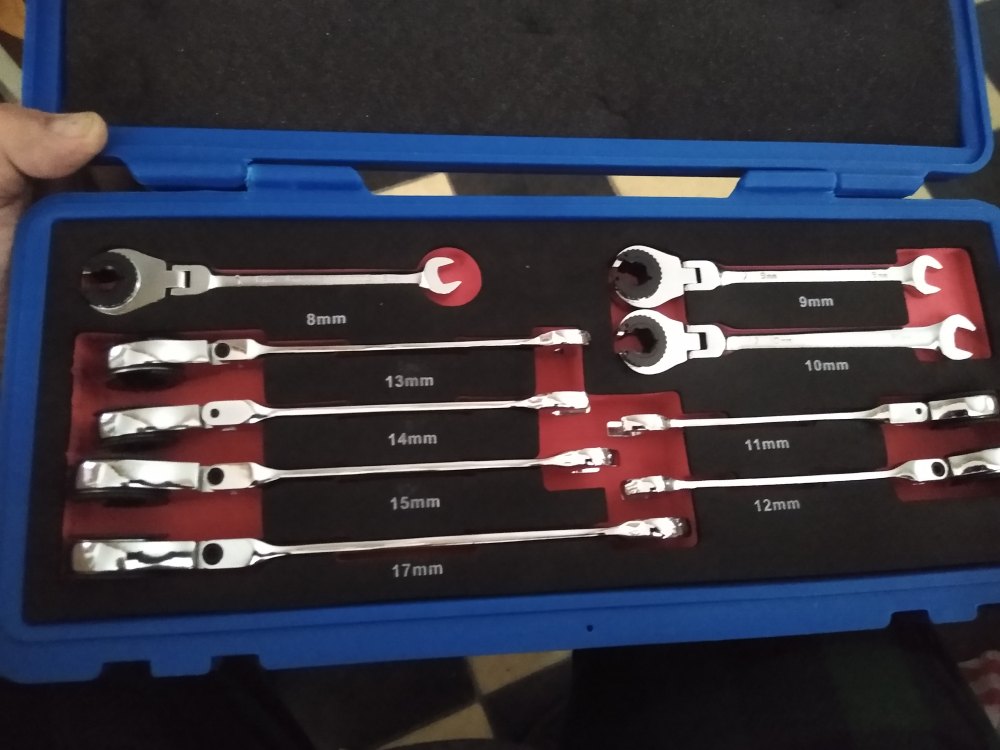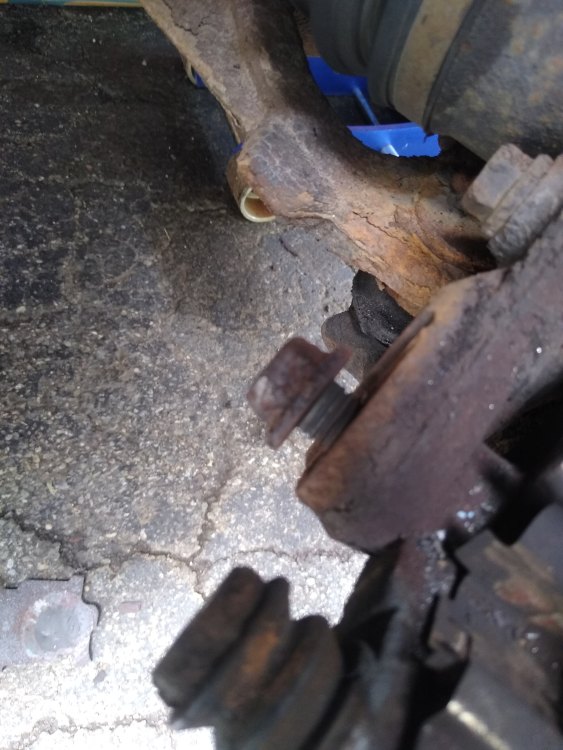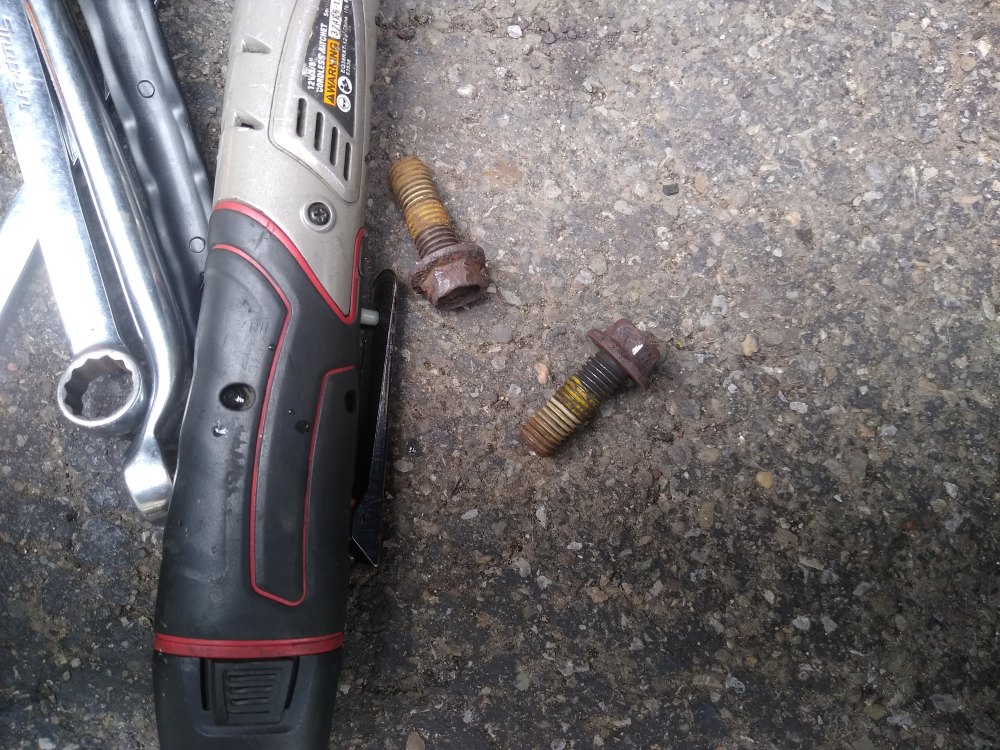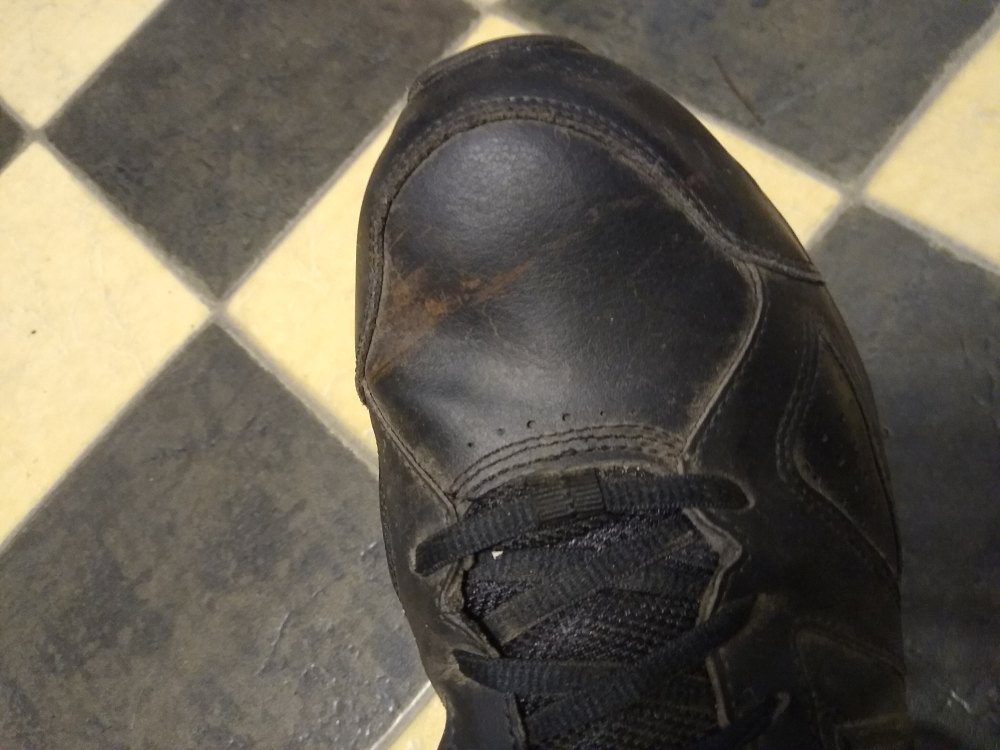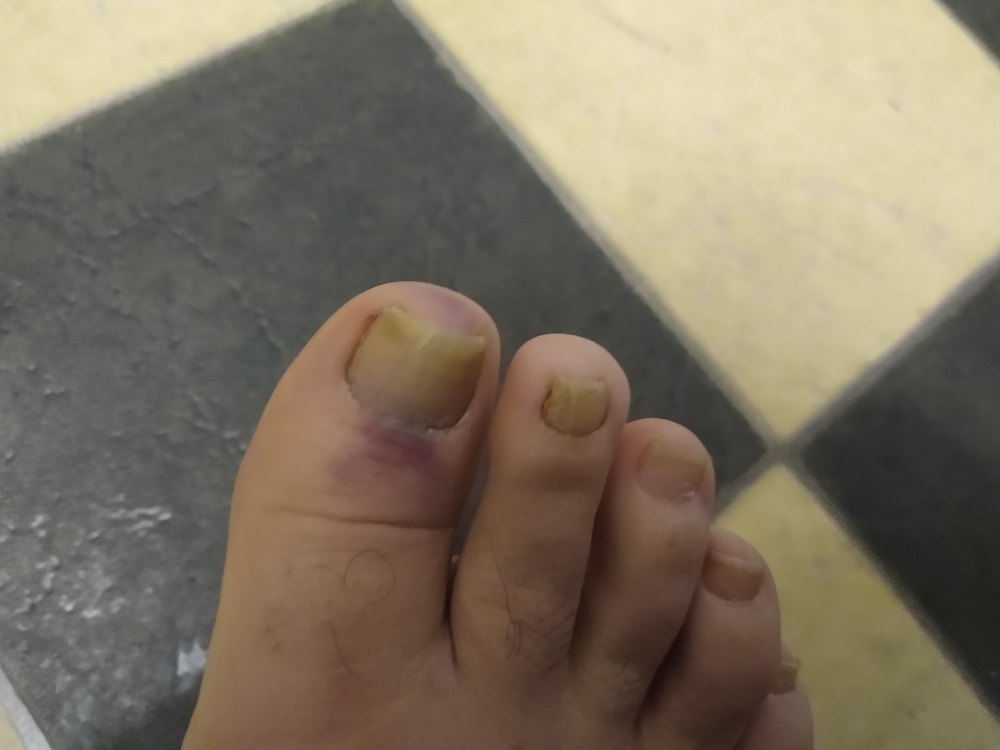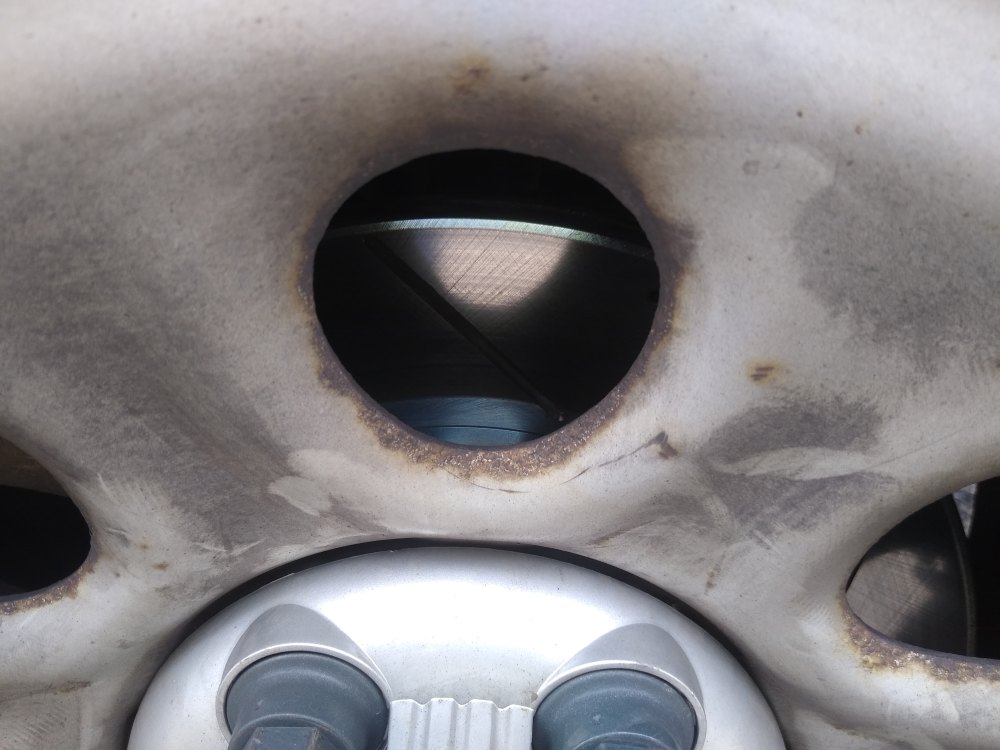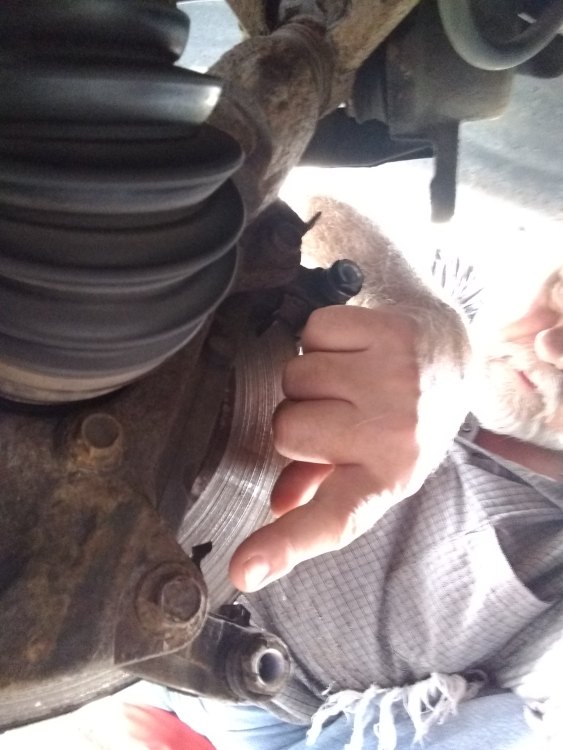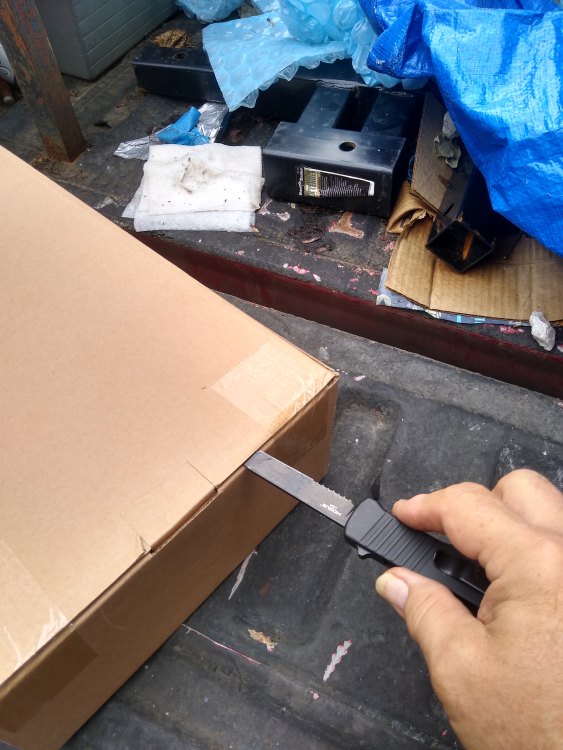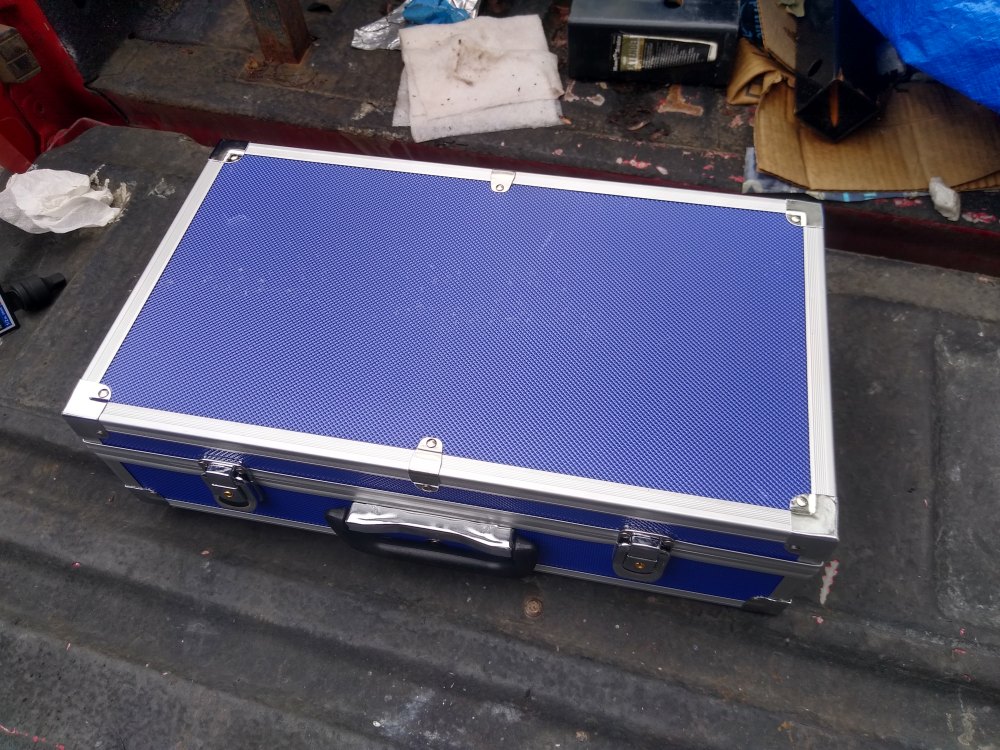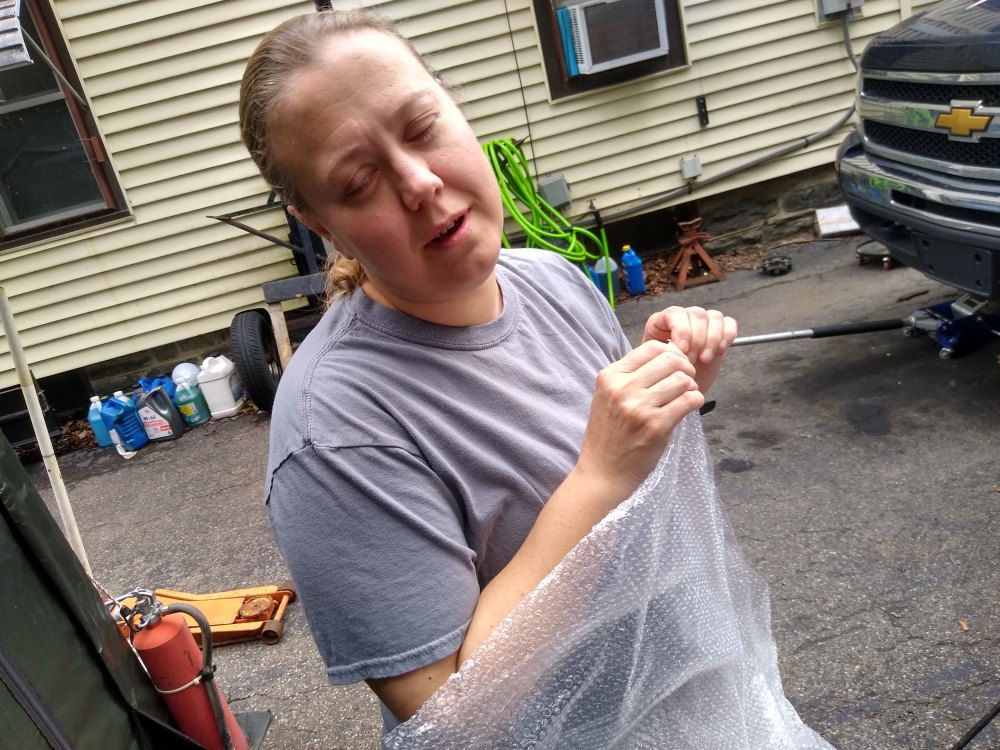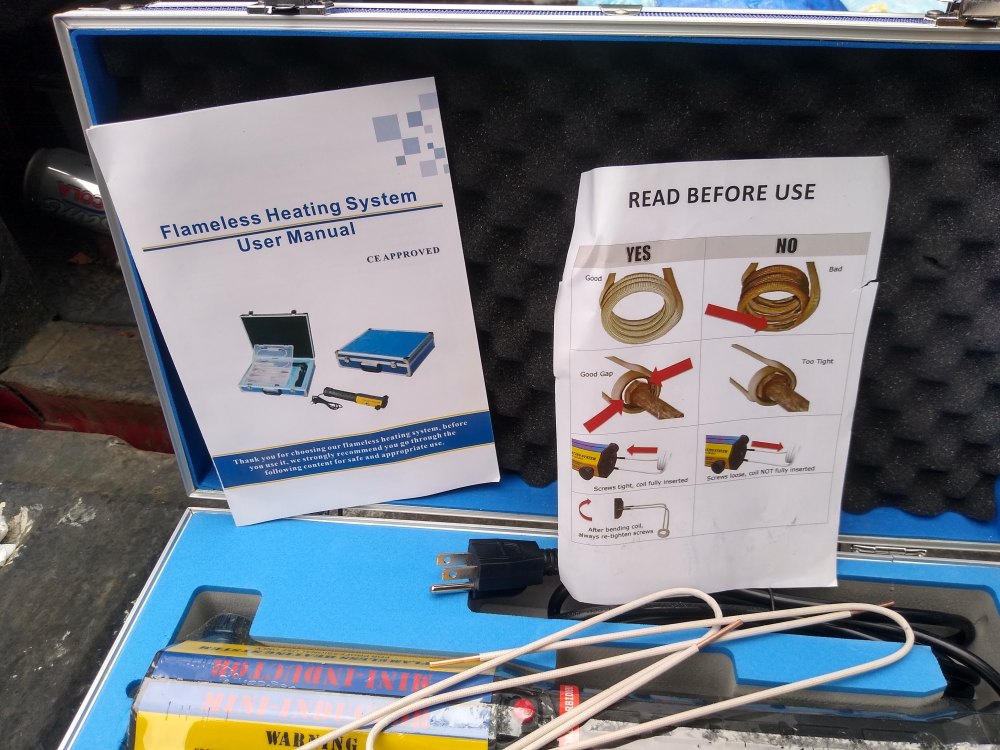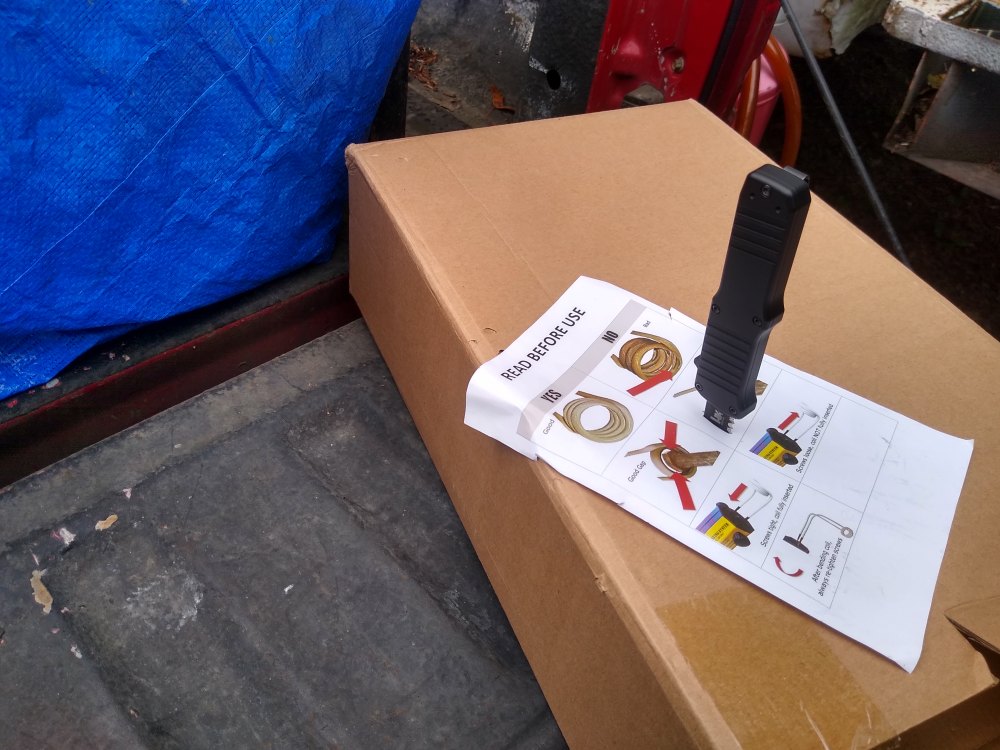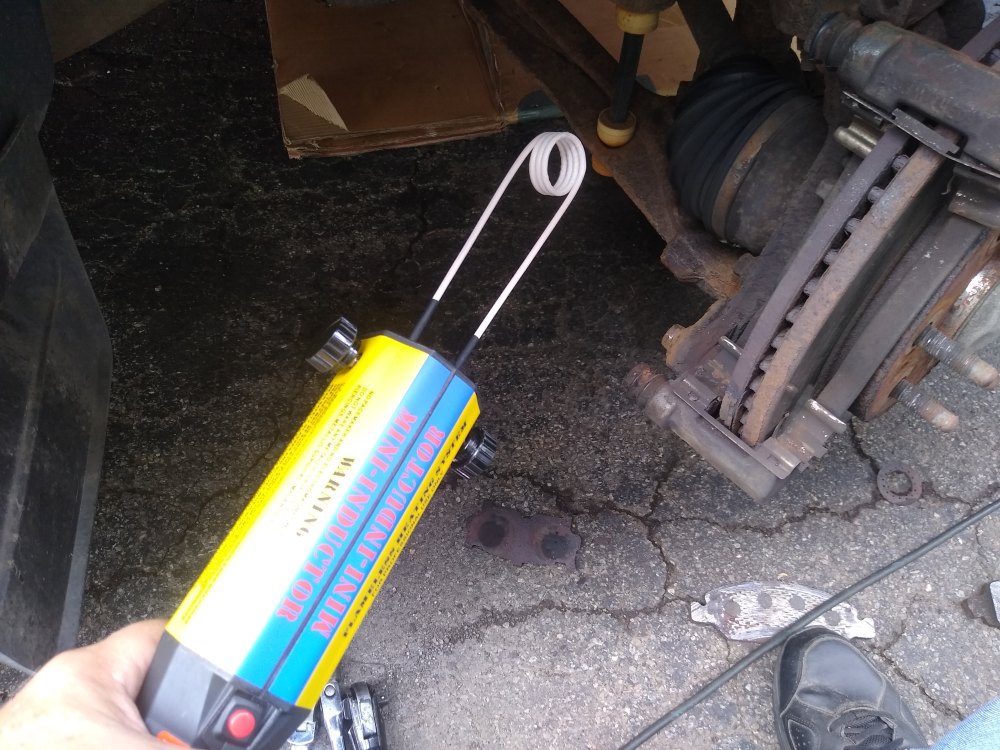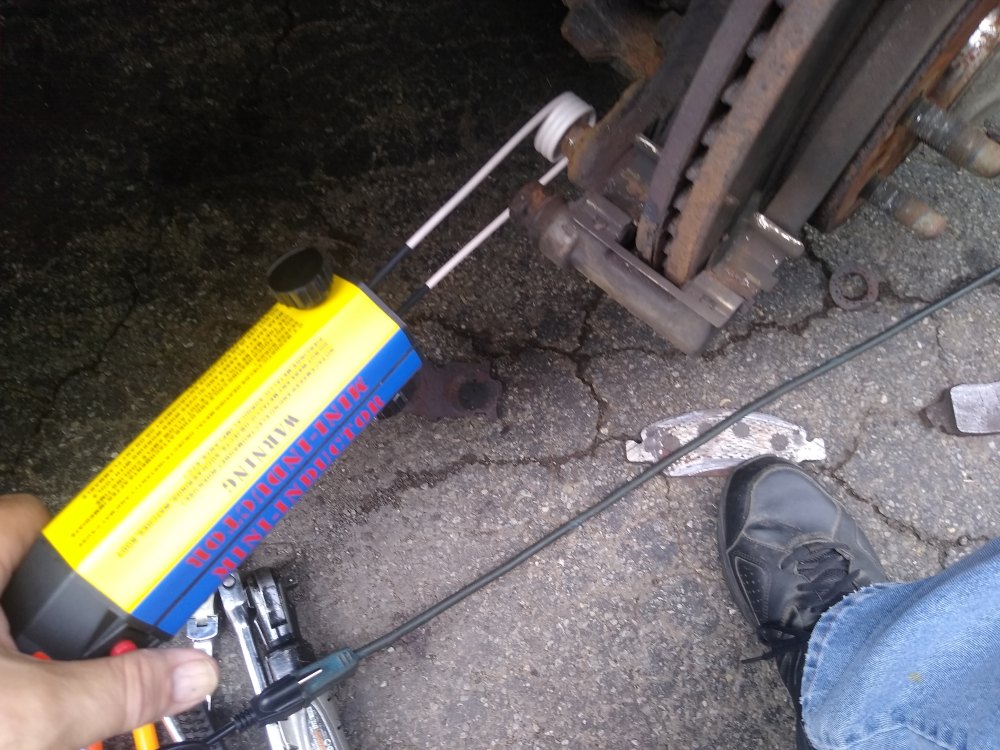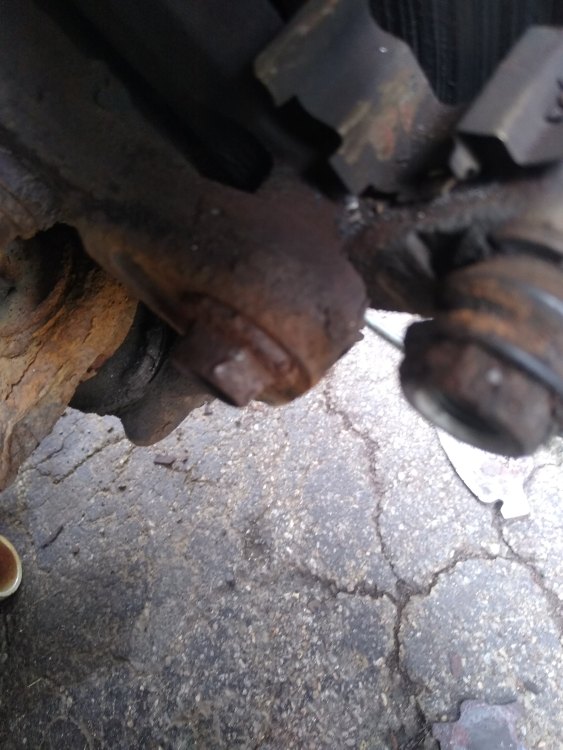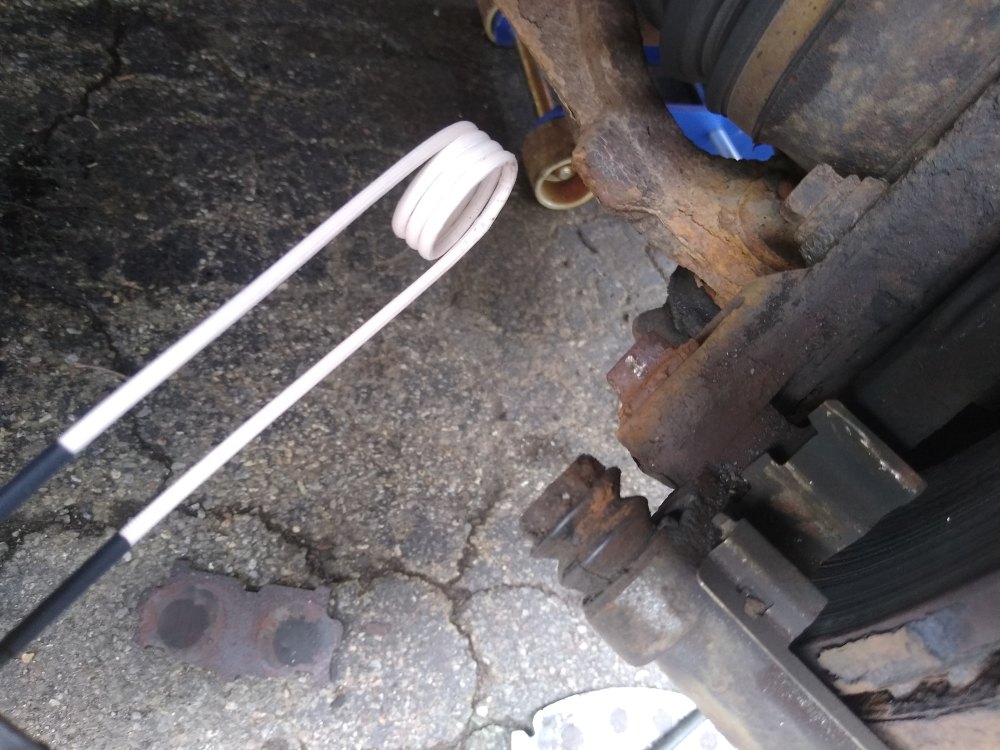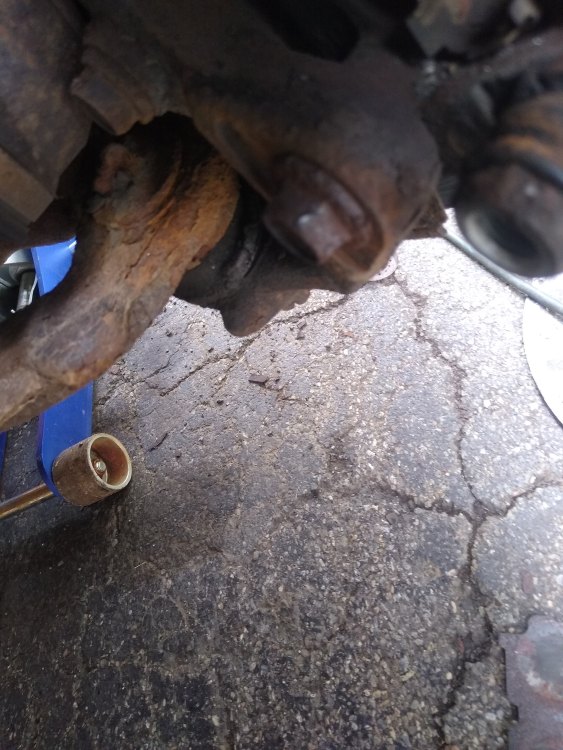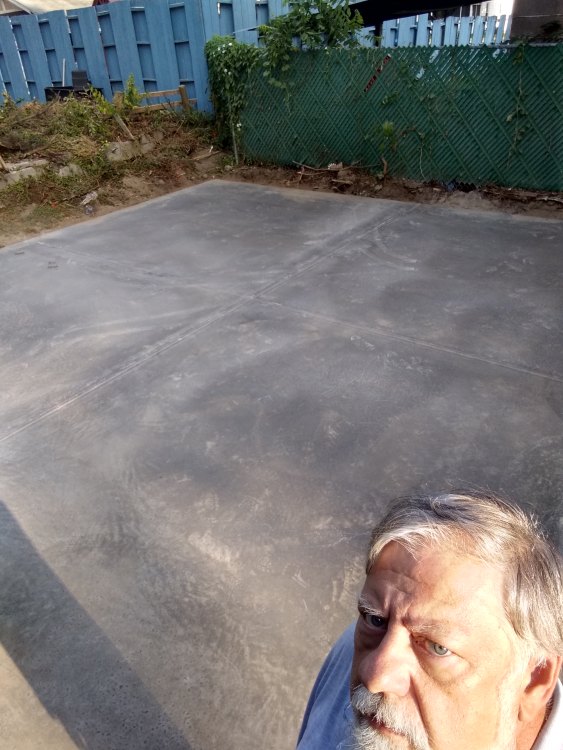-
Posts
11,154 -
Joined
-
Last visited
-
Days Won
41
Content Type
Profiles
Forums
Gallery
Events
Everything posted by rockmeupto125
-
Not sure to put this in the Garage or Handyman, so here goes. Recommendations for floor sealers or coatings. I'd love an expoxied metalflaked floor, but that's just not economically viable. I want something that will protect the floor from degradation and staining primarily. If It comes in colors that's peachy, but doubtful. I need something long lasting as well, because I'm not the person to empty the garage and recoat every couple years. As an example, I've been here 21 years and have yet to seal the driveway. What have you used or know of being used at your work or a friends garage that you can comment on?
-

Need Blackbird spare parts.
rockmeupto125 replied to rickrad's topic in The Sales Floor -- For Sale/Wanted
Cal, the forks legs are identical outside as far as fitment. Carb and FI fork tubes are different lengths, and the internals are different. Carb has steel rods and smaller bushings, FI has aluminum rods and wider bushings. As you are aware, they can interchange. -

Need Blackbird spare parts.
rockmeupto125 replied to rickrad's topic in The Sales Floor -- For Sale/Wanted
Alright, Club..........I'll go over your list and see what's in the shed I'm cleaning out. -

Cool tool-Craftsman Speed Spinner Ratchet.
rockmeupto125 replied to superhawk996's topic in The Garage
My thumbs are wonky, one explanation is that they are double jointed. Not really, but I'm lacking a pivot point or something that works with leverage. The muscle is stronger than average, but the net result is that I'm weaker than average because I don't have that leverage. Using a thumb wheel is one situation where it doesn't work very well. -

Cool tool-Craftsman Speed Spinner Ratchet.
rockmeupto125 replied to superhawk996's topic in The Garage
I have never seen one of those. Thanks, superhawk. I can't think of a place I'd like to have one. Maybe in woodworking situations, I don't know. I have a couple ratchets with a thumb wheel, and every time I try to use them, I think "why did I even bother?" I still have the majority of the first tool set I ever bought. It looks cheap chinese, but it was cheap japanese. Some of the sizing is only partially struck. The plating is still very intact and the only ones I can't use are the ones which were simply worn out from decades of use, or split because I should have been using an impact socket. There's a lacking of 15 and 18mm in that set, we didn't use them much back then, which I guess is why they are all the rage now. -
-
I crawl underneath my brother's Safari van (from Washington State) and marvel at how everything looks about a year old by east coast standards.
-
Now that I have a hot minute......... The fasteners I'm focused on are, as blackhawk suggested, already profoundly compromised and often quite stuck. Not only am I looking at brake lines and things very exposed to road salt and corrosion, but also exhaust components that have tubing or wires connected to them that are degraded from thousands of heat cycles and exposure to elements.
-
I have Knipex pliers.
-
Well shit. Now I have to spend more money. 😁
-
Disclaimer: IcePrick posted this in the joke thread of the forum, not here, but I wanted to further the discussion without polluting the joke thread. Mike, I've looked for this wrench and couldn't find it in 0.748 seconds so I gave up. Could you tell me what this is called so I can refine my search? It looks pretty nifty but I would expect to be exponentially unstable in higher torque applications with the multiple pivot points. The conversation was about flare nut wrenches, and the above wrench checks a couple boxes. BUT....there are two styles of wrench that I have never found, and would like to. One would be a standard click style ratcheting box end wrench that has an access slot cut into it like a flare nut wrench. The round of the wrench AND the drive insert would both have an open slot, and would have to be aligned to place the wrench on the fastener. Additionally, the insert would have to unload and reload into the ratchet mechanism seamlessly as the cut out section rotated past the mechanism. The second would be a split wrench where part of the round would be removable or displaceable to allow fitment around an obstruction such as tubing, and then be returned to make a complete round in order to apply maximal torque to a non-compliant fastener. Open end and flare nut wrenches will stretch and lose grip, ruining the fastener and often the wrench. A closed end wrench is much more stable and being able to "assemble" a drive cage around the fastener would allow higher torque levels. I've done effectively the same thing by placing a vice-grip locking plier around the driving round of a flare nut wrench to keep the drive surface from stretching, but there's not many applications where there is room for that to be realistic. So, has anyone seen either of those type of wrenches?
-

Held Touch Gloves: Size 8
rockmeupto125 replied to SierraKLR's topic in The Sales Floor -- For Sale/Wanted
Held has always had numeric sizing. I take a 12.5 and they are hard to find. -

Gigabyte Aorus Z390 Pro Wifi motherboard
rockmeupto125 replied to SwampNut's topic in The Sales Floor -- For Sale/Wanted
Will pass this I don't have the time right now. Thanks, though. -

Gigabyte Aorus Z390 Pro Wifi motherboard
rockmeupto125 replied to SwampNut's topic in The Sales Floor -- For Sale/Wanted
I'm gonna be needing a new computer here fairly soon. Let me think on this unless someone else pipes up. -
I think geography plays a big part in how bolts get seized up. Granted, they all have the same threadlocker on them from the factory. Fur uses BG products and I still have some on the shelf, good stuff. But rust is a whole different ball game combined with salt and multiple heat cycles. Heating the bolt melts the threadlocker. It also heats the surrounding material, which then also expands. Net result is a larger gap, and a better chance of removing the bolt.
-
Not a type, dumb fingers. Edited and thanks for the proofread. The unit will supposedly kick out on overheat, and directions (yes, I did read them) suggest a maximum of 120 second therapy sessions before allowing the unit to cool down. Same here, but the deciding factor to go big in this case was the rapidly deteriorating integrity of the bolt's drive face after multiple failed attempts to reef it off. Incidental factors included accessability, lost time, and it was too physically hot to work outside for more than 15 minutes at a time.
-
Can't be tight if it's a liquid.
-
After 2 more 30 minutes second treatments, the bolt continues to appear undisturbed, but there is some significant heat coming off it. Of course, I neglected to drag out my digital thermometer. Next, time, I assure you. A little tug with a 24 inch breaker bar and the bolt readily loosened. The exact same process worked for the second bolt. After a half turn, I was able to spin these guys out with my 3/8ths electric ratchet. And would you look at that...over 200k miles and these little wretches still have the factory threadlocker on them. Those caliper mounts weren't coming off without a fight. A brief application of T30 bit on the rotor and it's FREE, FREE from its prison of the last 11 years. Does anyone know how much a Silverado 1500 brake rotor weighs? Steel toed shoes are a good thing. That I'm not wearing. After an hour break to ice my foot and cool off, and then see if my toe bent in the right direction, the whole thing went back together pretty readily. And my shiny new brake rotor a couple days later when I remembered to take a picture. The grinding went away, so I don't have to go to the junkyard looking for backordered parts. I went anyway, but that's another story. So, bottom line. I got a new 1000 watt induction heater to try out. Never used one before. I don't know how hot it got, and there's no way to prove that using it is what allowed me to remove the bolts. Scientifically, I've made no progress. And from a user perspective, there was a noise, I spent several hundred dollars, now there is not a noise and I got my brake fluid back. I walked with a limp anyway, so there really wasn't a change there.
-
Okay, it's time for a little story. Blue truck makes a grindy noise. Can't be positive if its the fenortinny rod bushing or the reciprocating gungulator shaft union, but both are on infinite back order so I decided to just change the brakes and rotors because they don't seem as smooth as usual and I'm almost out of brake fluid. One side is a 15 minute job if you know where in my garage the correct sockets are. I don't, so 45 minutes into an easy job, I come to a dead stop with a pair of exponentially torque resistant bolts. Progressing rapidly through 3/8ths to 1/2 inch, 16 inch breaker, 6 point wrench with hammer, 24 inch breaker, 24 inch with torque multipliers (jack handle, then 4ft fence pipe), it was decided this task needed to escalate aggressively. The 95 degree ambient temp was certainly not enough, so we were going to need more heat. Now if you've seen my garage, you'll appreciate that when I say it would take an hour to get my tanks outside, I mean it. That's another hour in the heat, so forget that. A MAPP torch would work, if I could only find mine. And there's also the consideration of heating components that I might not want to have to replace. Here's one of those bolts. The other looks quite similar. So I grab a suspiciously clean box off my shelf. It's clean because I put it there only a few days before this. I used a blade to get through the super grip tape used for boxes intended for international shipping. And oh my goodness, what is this? Maybe an oboe! Correctly played, it can make people leave their seats. Maybe it will do the same with bolts! The bubble wrap goes to the lady. As suspected, she is cheaply and easily pleased. But, no oboe. Instead, this pleasantly tinted box holds a special tool indeed...a space age item called an induction heater. Been wanting one for a while, and now that money is becoming quickly worthless, this was getting to be at an attractive price. It's a 1000 watt unit, whatever that means, and came with several heating coils in different configurations, as well as the requisite paperwork. Which was quickly man-processed. So I placed an appropriate coil in the screw fastening blocks, plug it in, and approach the insolent bolt, heeding the instructions not to dry fire the device, but to only activate it under load. I place the coil around the bolt, and fire it off. A fan comes on, and an LED. After 30 seconds of therapy, the bolt looks like this. I again approach the bolt...... And after a second 30 second therapy session, the bolt now looks like this.
-
Well, it's concrete, but it identifies as stucco. You know, like that guy that wins all the women's swimming championships. it's 3500psi fiber reinforced concrete. I should have had them put dye in it. Can't cry over poured concrete. It's thicker at the perimeter and under the area for the lift. Minimum thickness is 4-4.5 inches. There's mesh in the lift area. I have no idea what the air mix was or the thermomagnetic coefficient of the mesh, Lowes didn't have the MSDS for it.
-
Lots of fancy talk out there about things I nothing about. Symmetrical, asymmetrical, 2 stage, 3 stage, top bar, bottom bar, and all kinds of confounding talk. What works for you, and what recommends? I'm leaning toward one with a top bar so there's nothing interfering on the floor. Does a top bar add structural rigidity vs a bottom channel? I've read of some that fit down into a cut into the floor, but haven't found any for sale. Tell me what you got?
-
What's the voltage at the battery, both off, and while running?


